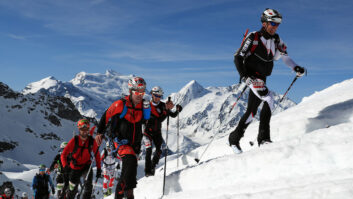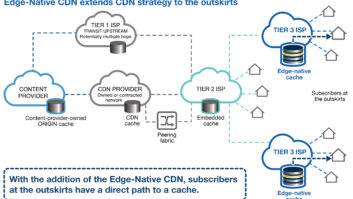
The senior director responsible for delivering Canadian broadcaster CTV’s 2012 digital Olympics coverage has urged broadcasters to treat digital “as an asset to get more people into broadcast rather than seeing it as a competing screen,” writes Adrian Pennington.
CTV, Canada’s number one TV network, a division of Bell Media, marked a return to Olympics broadcasting after a hiatus of 16 years for the Vancouver Olympic Winter Games. Together with Canadian media conglomerate Rogers Media, it has formed Canada’s Olympic Broadcast Media Consortium, with the rights to London 2012, which will see it deliver an unprecedented amount of coverage online to Canadians.
Mark Silver (pictured), senior digital director for Canada’s largest private broadcaster, plans to build on the successful digital delivery system established for its coverage of Vancouver 2010.
“We are building on what we achieved at Vancouver, which in itself was built on learning from NBC’s successful digital delivery of the 2008 Beijing Games,” explained Silver. “NBC showed us what was possible by focussing on making the online video experience a quality one with integration of statistics and information at its core.”
For Vancouver, the Consortium chose adaptive bitrate encoding for all its video, rather than having a single one size fits all stream. It aired up to 20 hours of live broadcasts a day and simultaneously streamed every second of the Olympic Broadcast Service’s host feed live online with traffic results that astounded executives.
“The numbers for online were higher than some Canadian speciality networks,” said Silver. “It was a game changer for us. Canadians had embraced the Games on TV and digital.”
The bigger summer Games next year will see even more content streamed online, but with a critical difference in the backend workflow. More specifically the way in which the Consortium creates on-demand highlights from the thousands of clips made available from the host feed and its own broadcast of the Games.
“For Vancouver we ingested, edited and encoded clips into a MAM in a traditional broadcast manner. For London 2012 the intention is to create the same content but not rely on broadcast systems for anything other than creating the live TV product. We will produce rough cuts from the digitally encoded stream for 100% of our on-demand video content and make those clips available across devices without touching the broadcast environment.”
Production will largely be based at various locations across Canada although the Consortium will also have numerous stand-up spots across London as well as a studio at the International Broadcast Centre in Stratford.
The Consortium distributes Olympics content to CTV, TSN, RDS, RIS Info Sports, Rogers Sportsnet, OMNI, OLN, V, APTN, ATN.
“We need to produce digital like TV, which means ensuring that the TV pictures have a digital story running in parallel to it,” said Silver. “We are trying to keep users engaged in content regardless of the platform it is viewed on so that the two media complement each other.”
The Consortium is also keen to make complementary and contextual use of social media so that whether audiences are watching on TV, PC or mobile a story is told in a way that compels them to use other digital media – TV, PC or mobile – to find out more.
“It’s about closing the loop and keeping the audience involved in the Olympics on our channels, by for example, truly incorporating real-time polls as a companion to the broadcast stream,” said Silver.
At IBC in amsterdam, where Silver is speaking on a panel discussing the digital Olympics, he will deliver two key messages.
“My main advice to other sports broadcasters exploring digital delivery is pick the right partners and make sure that they understand what is involved in putting on an Olympics,” he said. “For example, one of the areas were we continue to struggle is scalability. While Olympic Broadcast Services provides a great deal to rights holders, the onus is still on us for video streaming, for example, so picking a partner which allows you to scale without significant capital expenditure is important.
“More broadly, the aim for all sports broadcasters has to be to enable an audience to move seamlessly between broadcast and digital. It’s not a process we claim to have all the answers to but we have an idea. Digital can’t be an afterthought and those on the broadcast side need to understand that digital is an asset to get more people into broadcast rather than seeing it as a competing screen.”







